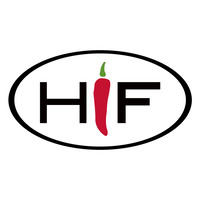Every year, The Packer’s Fresh Trends survey asks consumers about their fresh produce buying patterns and perspectives, including about sustainability issues. The Fresh Trends 2025 survey data shows that packaging details tend to outweigh production details for sustainability-minded consumers.
Survey participants for the 2025 report were asked to rank five sustainability-focused practices in order of importance. Based on average rankings across all respondents, biodegradable packaging was seen as the most important, followed by no packaging in second place, and water conservation practices in third place. Organic growing practices and biodegradable produce labels were tied for least important with the same average ranking.
These findings fit with findings from similar consumer sustainability research done by the International Fresh Produce Association.
“Just over half of consumers consider sustainability attributes, such as growing methods and packaging materials, when purchasing fresh fruits and vegetables,” Gina Jones, IFPA vice president of global insights, told The Packer.
Jones shared that, according to IFPA’s 2024 Consumer Tracker report, 58% of respondents reported they are willing to change their lifestyle if it benefits the environment. Additionally, 44% of respondents said they are willing to pay more for products they see as helping the environment. This includes packaging.
According to IFPA’s report, slightly over half of respondents were willing to spend more for products in recyclable or compostable packaging. Respondents said they were willing to pay about 6.5% more for these types of packaging.
Sustainability Perceptions Across the Generations
There were strong age-related trends in how consumers ranked the importance of different sustainability issues in The Packer’s Fresh Trends 2025 report.
For example, millennial and Gen Z respondents joined with traditionalist (those born before 1945) respondents when it came to the comparative importance of packaging issues. Respondents in those generational groups ranked biodegradable packaging as the most important sustainability practice more often than did other age groups. Similarly, the youngest respondents and the oldest respondents ranked no packaging as the second-most important sustainability practice more often than respondents in other age groups.
While organic growing practices were ranked overall as the least important sustainability practice when weighted averages were considered, the specific responses were very polarized. Of all survey respondents, 24% ranked organic production as the most important — a relatively large proportion when compared to 28% for biodegradable packaging and 23% for no packaging.
Notably, millennial respondents in particular were more likely than average respondents to rank organic growing practices as the most important sustainability practice at 27% compared to 24%. They were also more likely to report being willing to pay more for organic produce than other age groups, with 16% of millennial respondents saying they would pay 50% or more on organic produce.
But it’s worth keeping in mind that 30% of all respondents ranked organic growing practices as the least important sustainability practice. This is a large part of why the average ranking of organic growing practices was so low. This devaluing of organic practices also showed stark age-related trends. Baby boomer (born 1946-1964) and traditionalist respondents ranked organic growing practices as the least important sustainability practice more often — at 36% and 59%, respectively — than the average of all respondents. These age groups were less willing to spend more on organic produce, with almost no respondents in those age groups reporting being willing to spend more than 24% on organic produce.
Other (Local) Areas of Sustainability
There are other sustainability-related issues of concern to consumers besides packaging and organics, of course, and that concern is growing. The IFPA report found that consumer interest increased dramatically in every sustainability topic it asked about in 2024 compared with 2023. For example, it found that pesticides were the strongest influence at 49% on fresh produce purchasing decisions for respondents in 2024. This compares with 27% of respondents saying pesticides influenced their purchasing decisions in 2023, when pesticides were still the top influencer.
The IFPA report also found that consumers are willing to purchase fresh produce making sustainability claims, even if they aren’t all that familiar with those claims. For example, 3 in 4 (75%) respondents said they would buy produce labeled “sustainably grown,” but only half that number (38%) reported they could define the phrase.
“Consumers are most confident in defining the term ‘locally grown,’ followed by recyclable packaging, greenhouse grown, and organic,” Jones noted.
Locally grown produce was also seen as being of high quality and safe, according to the IFPA report. Respondents also reported being willing to pay a premium for locally grown produce, roughly 10% more in fact, the highest reported premium compared to other produce method claims like organic (9.35% more), greenhouse grown (7.66% more) or sustainably grown (7.38% more).
Respondents to the Fresh Trends 2025 survey similarly reported interest in locally grown fresh produce, with 68% of respondents saying they felt strongly about buying fresh local produce. About a third of respondents reported buying more locally grown produce in 2024 compared with 2023, and 58% said they would buy more if price was no object.
Related: Get more insights by downloading the Fresh Trends 2025 report here.

















